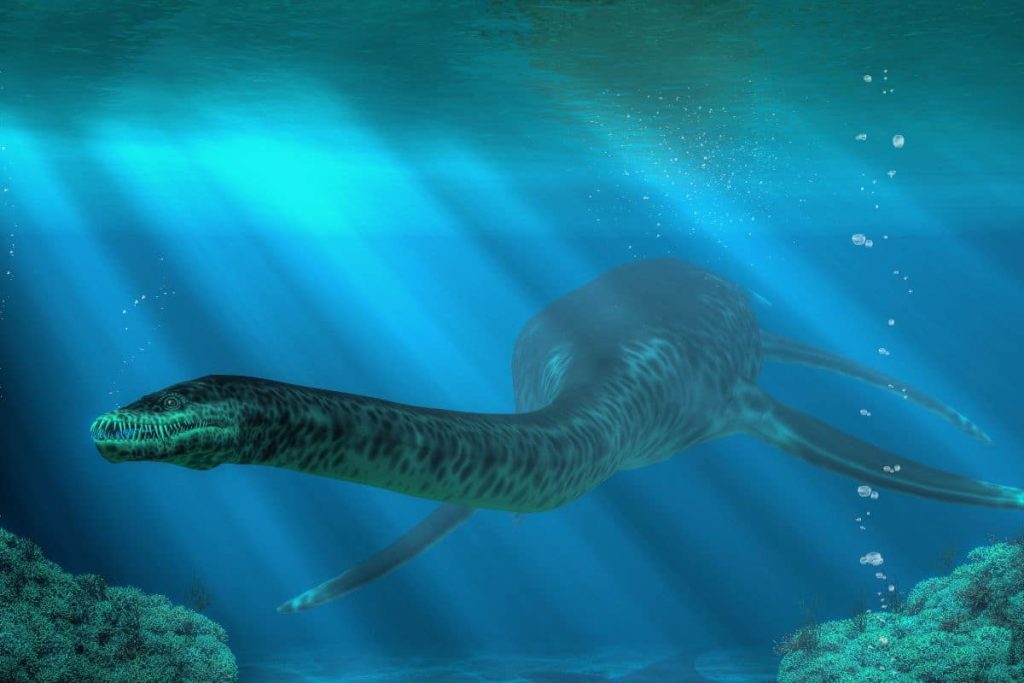This 183-Million-Year-Old Fossil Is Unlike Anything Seen Before—Here’s Why? – The Daily Galaxy –Great Discoveries Channel

A fossil discovery in Germany is revealing unexpected details about a Jurassic-era marine predator. Scientists examining its preserved soft tissue uncovered something never seen before in plesiosaurs. The findings challenge long-held assumptions about how these ancient reptiles adapted to their environmentThe discovery of a 183-million-year-old plesiosaur fossil in Germany has provided scientists with unprecedented insights into the external anatomy of this iconic Jurassic-era marine reptile. Researchers at Lund University in Sweden have found fossilized soft tissue, revealing that plesiosaurs had a combination of smooth and scaly skin—a feature never observed before in these ancient predators.Soft tissue preservation in fossils is extremely rare, particularly in marine reptiles. While bones can last for millions of years, skin and internal organs usually decay long before they have a chance to fossilize.However, the newly unearthed 183-million-year-old plesiosaur, found intact near Holzmaden, Germany, retained portions of its skin and flippers, allowing scientists to analyze features never seen before in these creatures.“I was shocked when I saw skin cells that had been preserved for 183 million years,” said Miguel Marx, a Ph.D. student in geology at Lund University and lead author of the study. “It was almost like looking at modern skin.”For decades, many scientists believed that plesiosaurs had smooth, scaleless skin, similar to modern marine predators like whales. This new study found a mosaic of smooth and scaly skin textures, suggesting that these reptiles had a more complex body covering than previously thought.“This mosaic of scales and scaly skin has never been reported before in a plesiosaur,” said Johan Lindgren, associate professor of geology at Lund University. “Thanks for this amazing find, we now have a much better appreciation of what these animals might have looked like while alive.”Plesiosaurs were among the top marine predators of the Jurassic period. With their long necks, powerful flippers, and streamlined bodies, these reptiles could grow up to 40 feet long and thrived in ancient oceans. They used their four paddle-like flippers to glide through the water, much like modern sea turtles.Despite being studied for over 200 years, very little was known about their external anatomy—until now. This discovery reshapes scientists’ understanding of how plesiosaurs adapted to their aquatic environment.“The discovery of scales was surprising and changes our perceptions of how these animals would have adapted to their pelagic environment,” Marx said.Beyond revealing new anatomical features, this fossil also provides important data for understanding evolution. The unexpected mix of smooth and scaly skin suggests that plesiosaurs developed specialized skin textures to enhance their hunting efficiency and mobility in different underwater environments.“We used a broad range of techniques to identify smooth skin in the tail region, as well as scales along the rear edge of the flippers”, Marx explained. “This provided us with unparalleled insights into the appearance and biology of these long-extinct reptiles.”Without the preserved soft tissue, researchers would have assumed that plesiosaurs were entirely scaleless, just like many other marine reptiles of the time. Comment Save my name, email, and website in this browser for the next time I comment.
© 2024 | Daily Galaxy | All rights reserved
Source: https://dailygalaxy.com/2025/02/this-fossil-is-unlike-anything-seen-before/






